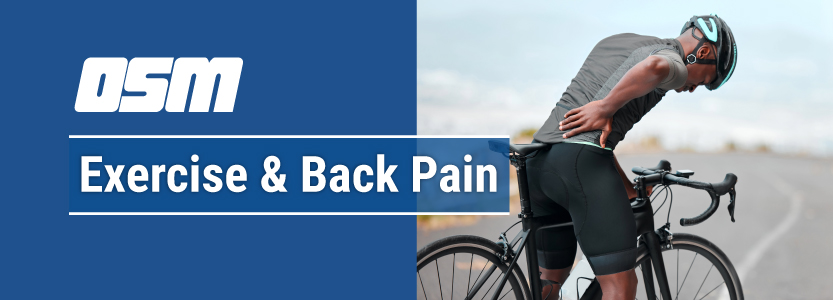Exercise and Back Pain
Article featured on Spine-Health
Back exercises are almost always necessary to rehabilitate the spine and alleviate back pain. A controlled, gradual exercise program that is tailored to an individual is usually the most effective.
While a typical response to back pain is to take it easy—either staying in bed or at least stopping any strenuous activity—resting for more than a day or two can actually undermine healing and worsen pain.
Benefits of Exercise
When done in a controlled, progressive manner, exercises for relieving back pain have many benefits, including:
- Strengthening the muscles that support the spine, removing pressure from the spinal discs and facet joints
- Alleviating stiffness and improving mobility
- Improving circulation to better distribute nutrients through the body, including to the spinal discs
- Releasing endorphins, which can naturally relieve pain. A frequent release of endorphins can help reduce reliance on pain medication. Endorphins can also elevate mood and relieve depressive symptoms, a common effect of chronic pain.
- Minimizing the frequency of back or neck pain episodes, and reducing the severity of pain when it does occur.
A balanced workout should include a combination of stretching and strengthening, as well as aerobic exercise that elevates the heart rate.
Exercise as Prescription for Back Pain
An effective program of back exercises should be comprehensive, working the whole body even as it targets the back. Exercise can be thought of as any other health prescription: A qualified health professional will customize exercise based on a variety of factors. These factors typically include:
- the clinical diagnosis
- whether pain is considered mild, moderate, or severe
- the pain relief necessary to tolerate activity
- the frequency of prescribed exercises
- the correct form and healthy posture needed for performing exercises
Maintaining the Exercise Program Over Time
Adherence to exercise is one of the most important factors for long term pain relief. However, maintaining exercise can be difficult for a variety of reasons, including worsened pain with activity, economic constraints, and low motivation. In one study, the most common reason for lack of adherence to exercise was increased pain caused by activity. When this is the case, an exercise professional can incorporate pain reduction and management as primary parts of the exercise program.
Personal preference also plays a role in adherence—for instance, if an exercise routine is too painful or not enjoyable, it is less likely to be done regularly enough to be effective.
The Orthopedic & Sports Medicine Center of Oregon is an award-winning, board-certified orthopedic group located in downtown Portland Oregon. We utilize both surgical and nonsurgical means to treat musculoskeletal trauma, spine diseases, foot and ankle conditions, sports injuries, degenerative diseases, infections, tumors and congenital disorders.
Our mission is to return our patients back to pain-free mobility and full strength as quickly and painlessly as possible using both surgical and non-surgical orthopedic procedures.
Our expert physicians provide leading-edge, comprehensive care in the diagnosis and treatment of orthopedic conditions, including total joint replacement and sports medicine. We apply the latest state-of-the-art techniques in order to return our patients to their active lifestyle.
If you’re looking for compassionate, expert orthopedic and podiatric surgeons in Portland Oregon, contact OSM today.
Phone:
Address
17355 Lower Boones Ferry Rd Suite 100A
Lake Oswego, OR 97035
Hours
Monday–Friday
8:00am – 4:30pm



